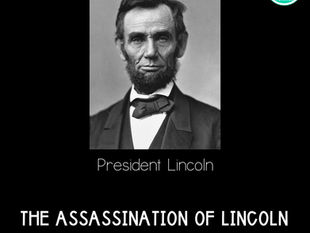
Are you a student learning about the Civil War? Are you a teacher preparing to teach about the Civil War? This website is for both of you! It will even be helpful if you are just curious about the Civil War.
If you are a student, you can read about Sherman's March to the Sea in the sections below. If you have questions as you read, you can send me a message, and I will do my best to get back to you.
If you are a teacher, you can use this website as a resource for yourself and your students, or you can purchase my printable reading passages and comprehension questions. They are available at Teachers Pay Teachers.

Sherman's March to the Sea
November 1864 - April 1865
After two months in Atlanta, Sherman was ready to begin his March to the Sea. Before leaving, he moved all of the remaining two thousand residents out of Atlanta and then burned all of the factories that could have been used to supply the Confederate army. Some of the fires did spread, but Sherman did not burn Atlanta to the ground.
Once outside of Atlanta, Sherman split his army into two groups. One group worked to contain John Hood’s Confederate forces while the sixty-two thousand strongest soldiers joined Sherman on his March to the Sea. To move quickly, Sherman cut his own supply lines. His men would live off the land. He also cut all telegraph lines, so messages to or from Washington, DC, could not be intercepted by spies.
Sherman’s goal was to convince Southerners that they couldn’t fight the Union and their government could not protect them. His men destroyed all bridges, tunnels, and railroads they found. Sherman’s men destroyed anything that could be used by the Confederate army. Foragers would travel ahead of the army and gather food for the soldiers. They took food and other supplies from any building they could find.
Sometimes, they had to search for food and valuables that had been hidden by civilians. Sherman’s psychological warfare worked. Across the South, he was seen as a monster who appeared to be everywhere. All theft and destruction were blamed on Sherman. Sherman’s men weren’t responsible for most of the damage to the South during his march. Desperate Confederate soldiers, escaped slaves, and looters were also foraging for food and supplies. However, the rumors fit Sherman’s narrative that he would destroy everything, so he encouraged them.
On December 21, 1864, Sherman’s troops arrived in Savannah, Georgia. The mayor quickly surrendered the city to Sherman. Sherman presented the city to President Lincoln as a Christmas gift. Interestingly, once the city surrendered, all of the destruction of the march stopped. Union soldiers bought any supplies they needed, all civilians were treated with respect, and several Confederate generals who had fled the city placed their families under Sherman’s protection. Sherman showed the South that resistance to the Union meant destruction and surrender to the Union meant peace.
Sherman left Savannah and continued his March to the Sea through North and South Carolina. Again, his men destroyed anything in their path that could be used to support the Confederate army. Sherman was most brutal in South Carolina, the first state to secede from the Union in 1860.
On April 10, while marching toward Raleigh, Sherman learned of Lee’s surrender to Grant. By April 13, the Union troops had taken Raleigh, and Sherman and General Johnston began negotiating the terms of surrender. On April 26, 1865, Johnston officially surrendered to Sherman. William Tecumseh Sherman is still seen as a heartless barbarian by many in the South. He is even called a war criminal for his March to the Sea. However, during his four-month march, there were only three
thousand casualties total, both Confederate and Union. Sherman’s March to the Sea traded property destruction for human lives.
Want to learn more about the Civil War? Check out the links below!
Causes of the Civil War
The Battle of Chancellorsville
The Battle of Spotsylvania Court House
The Second Battle of Cold Harbor
Surrender at Appomattox Court House





